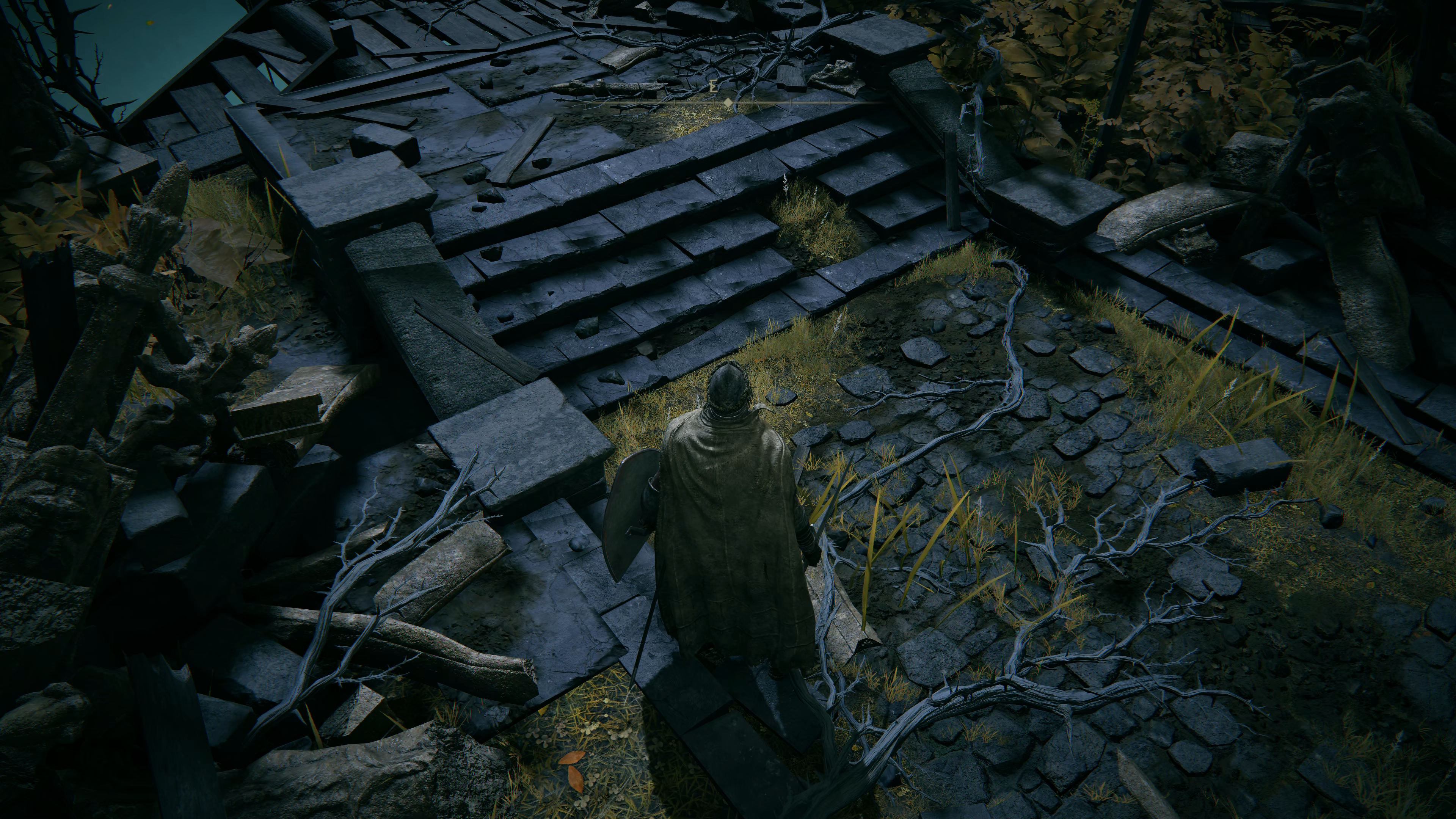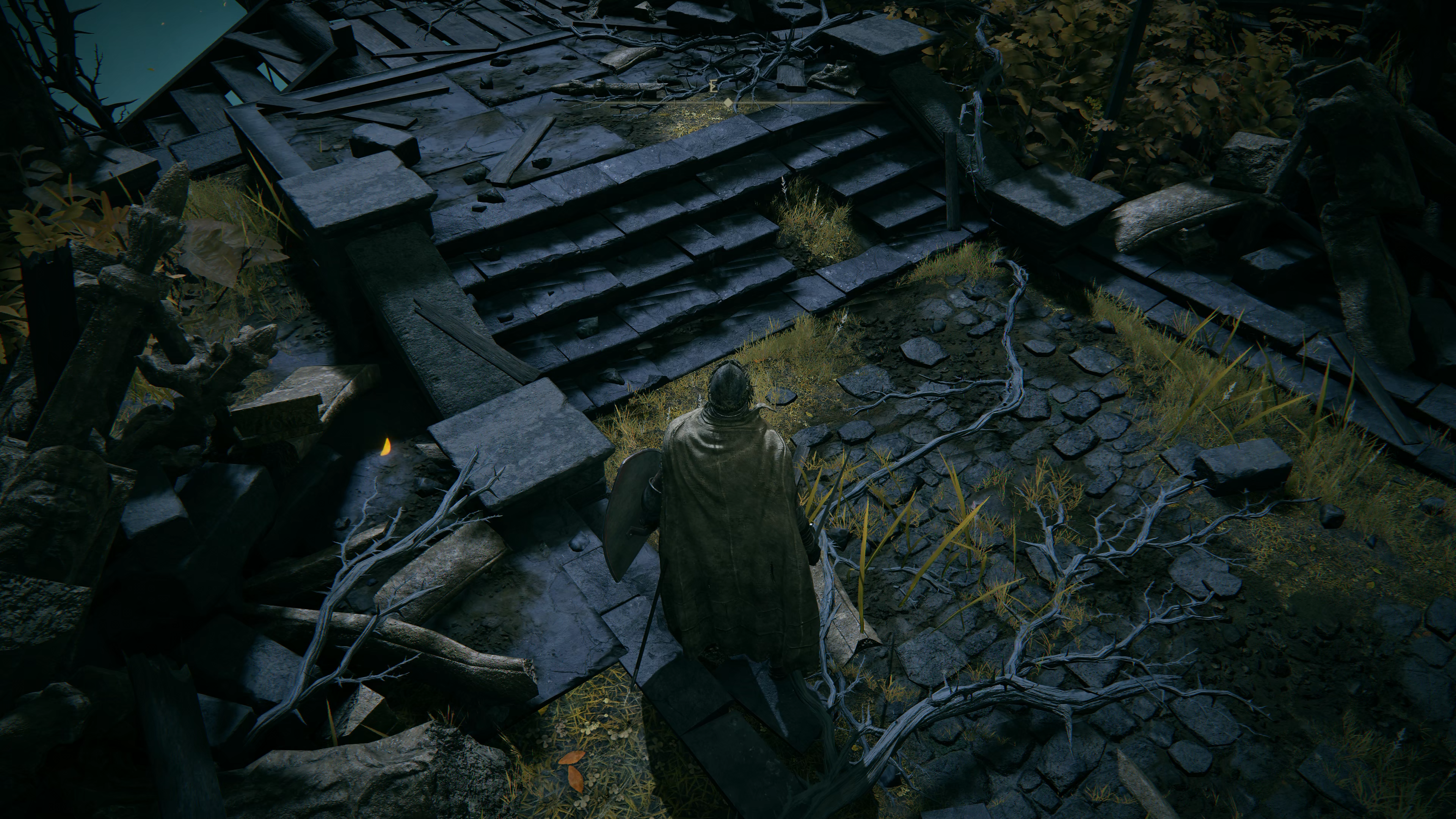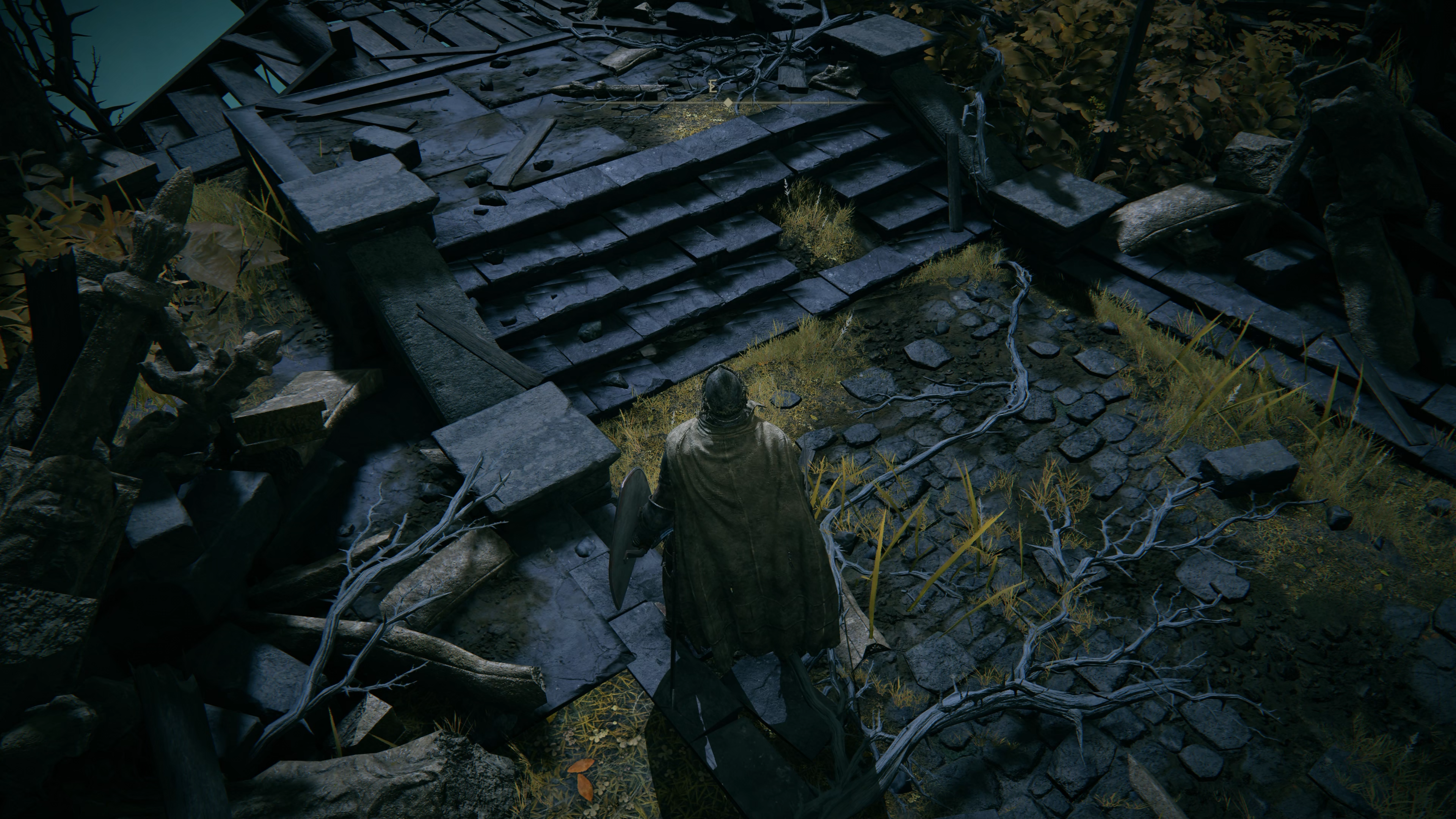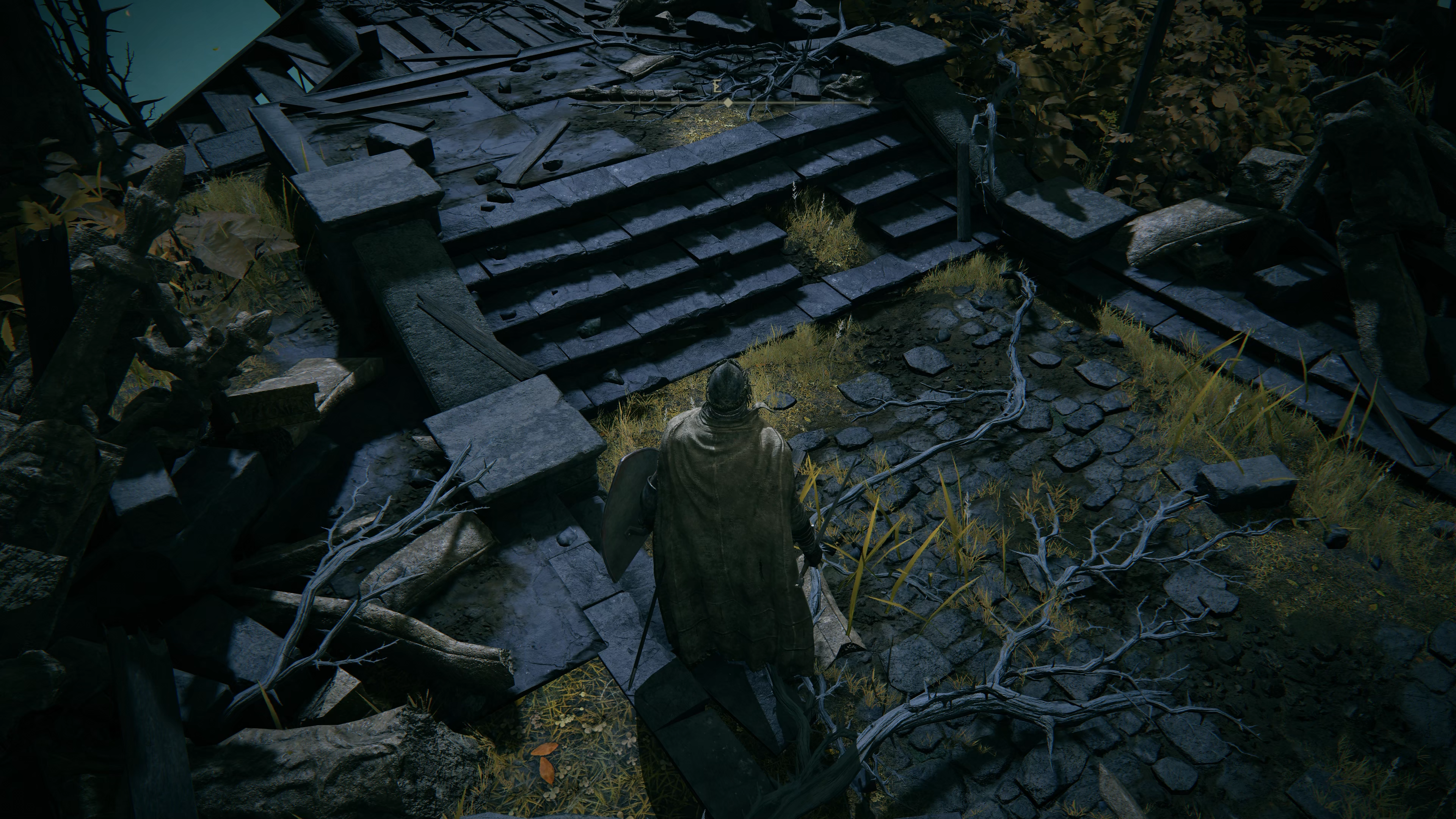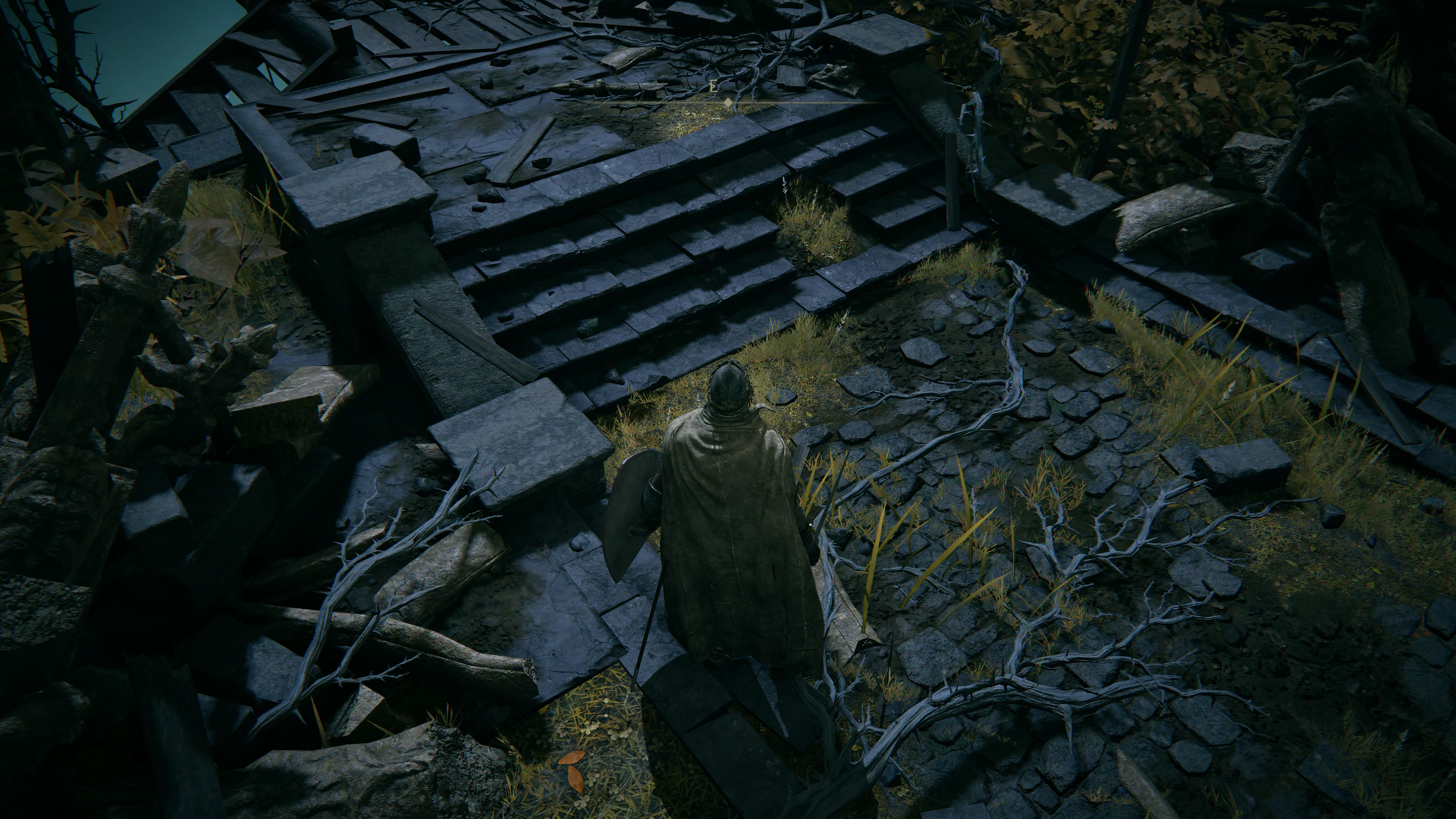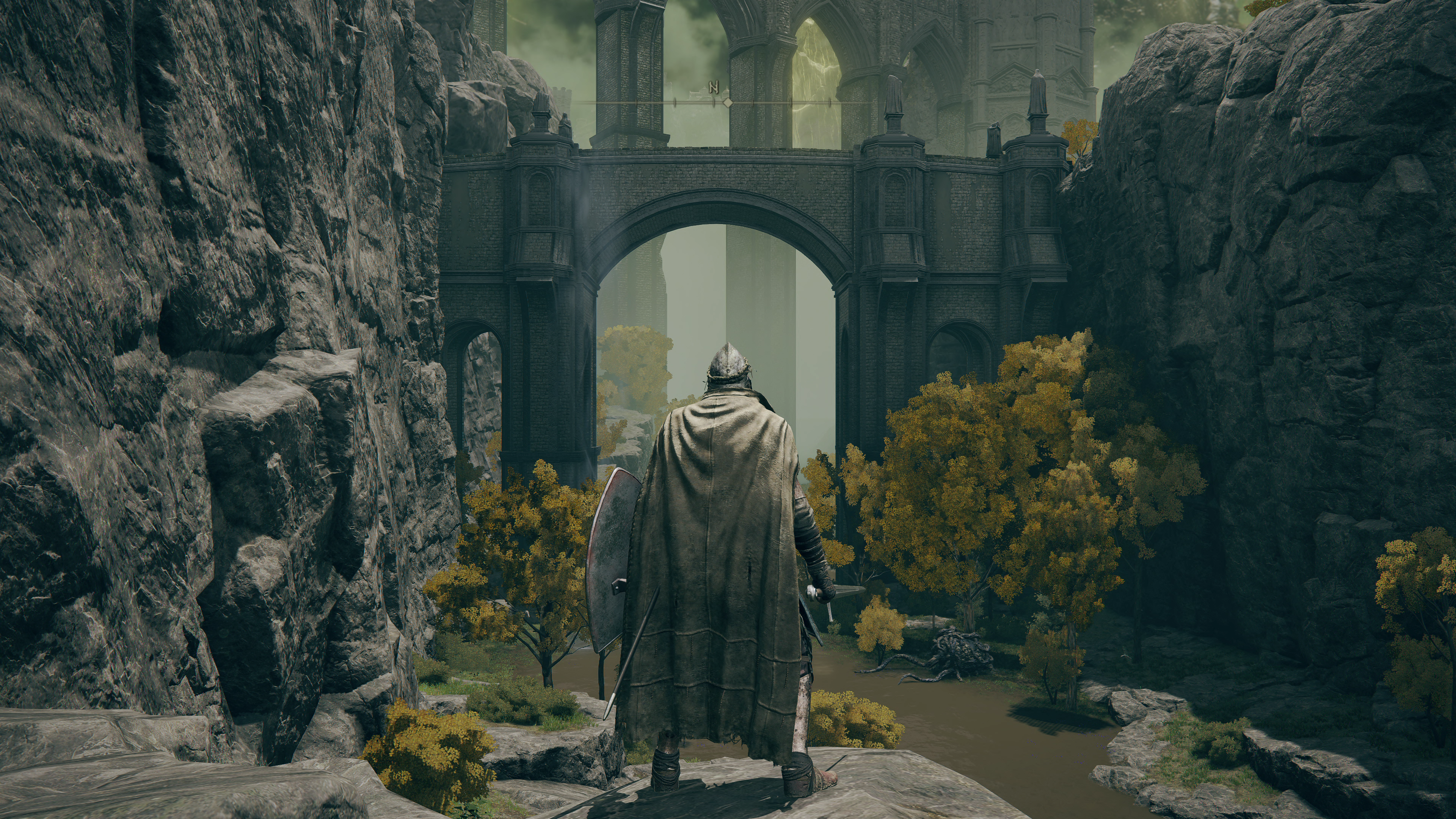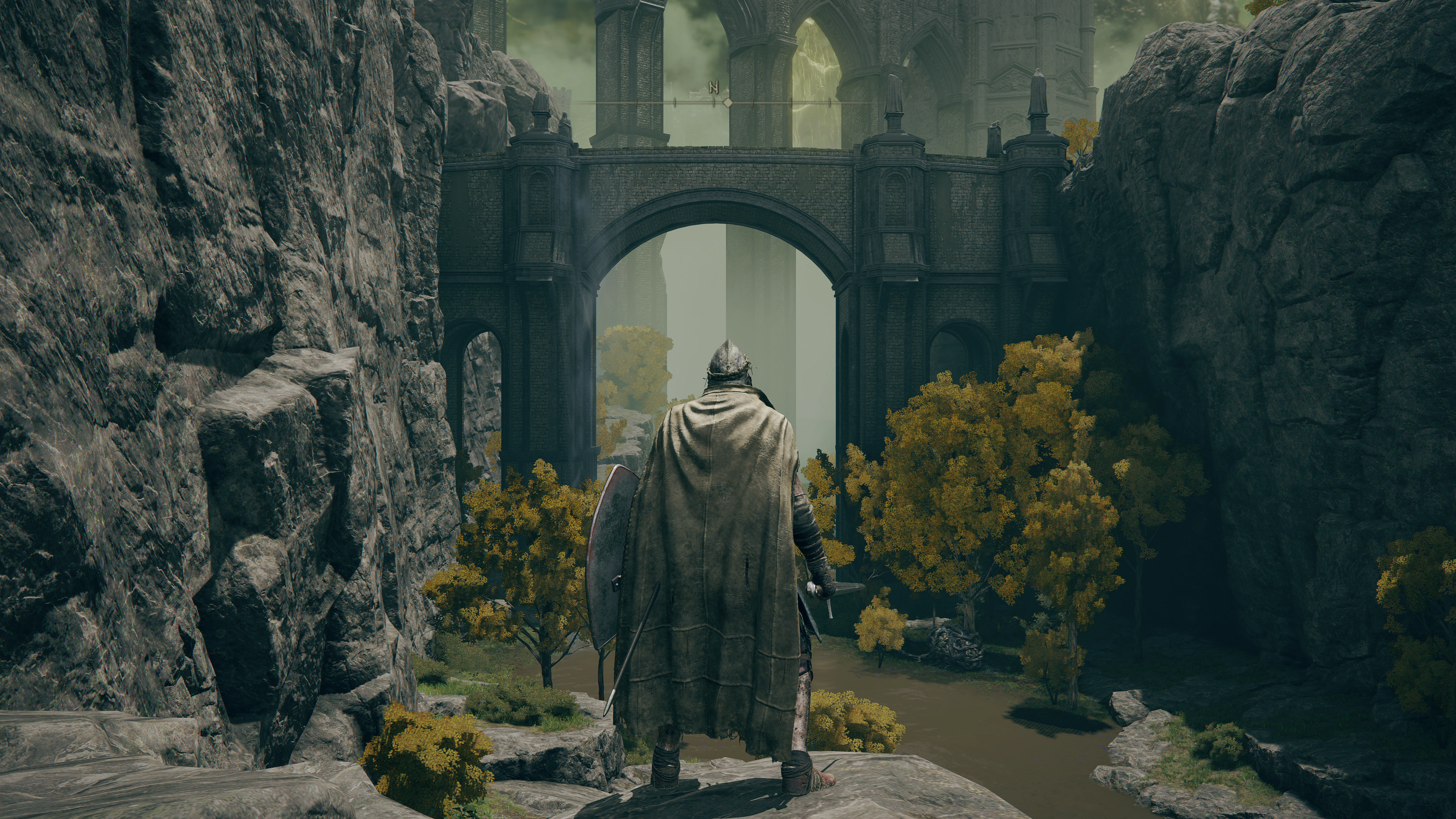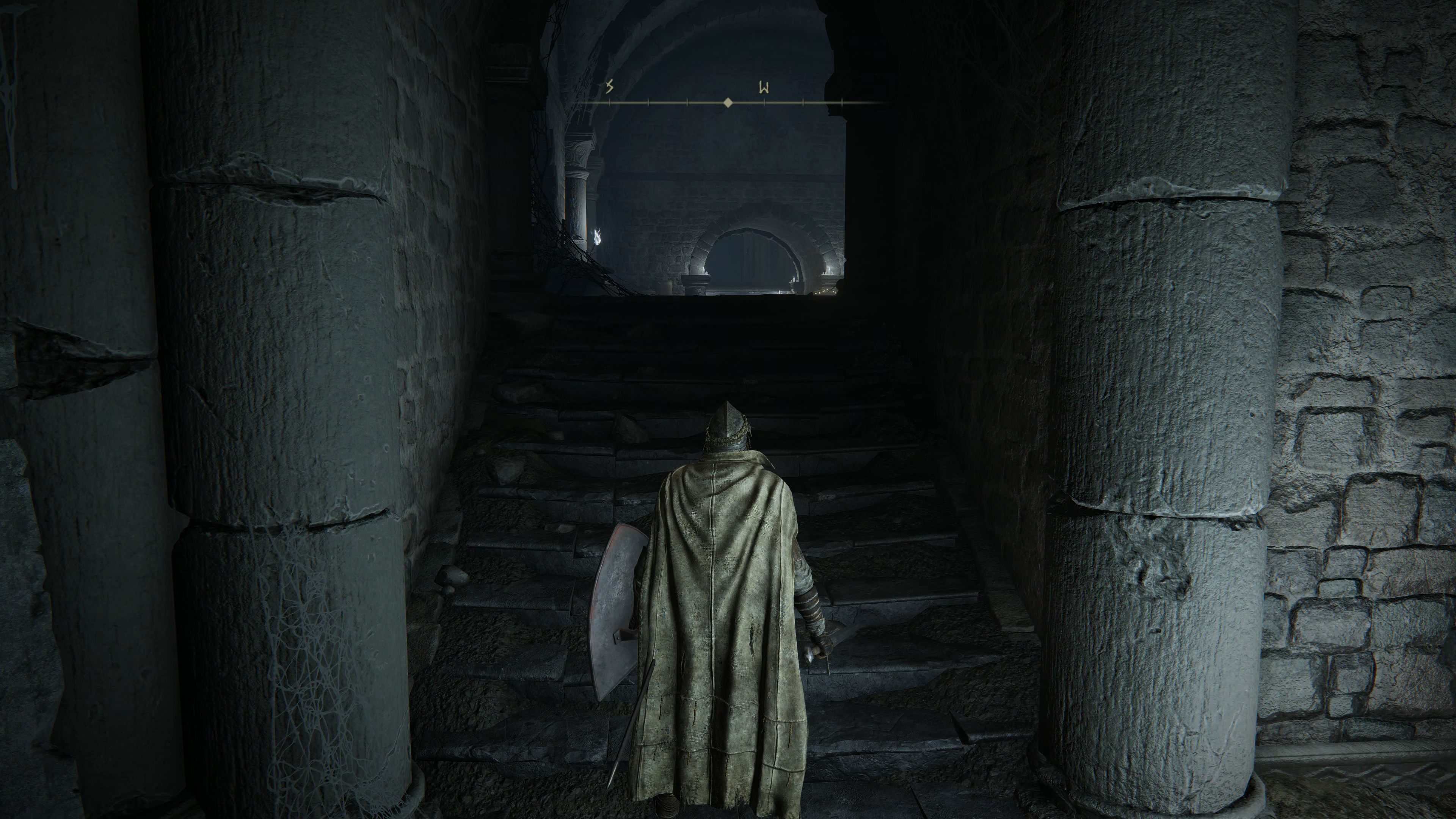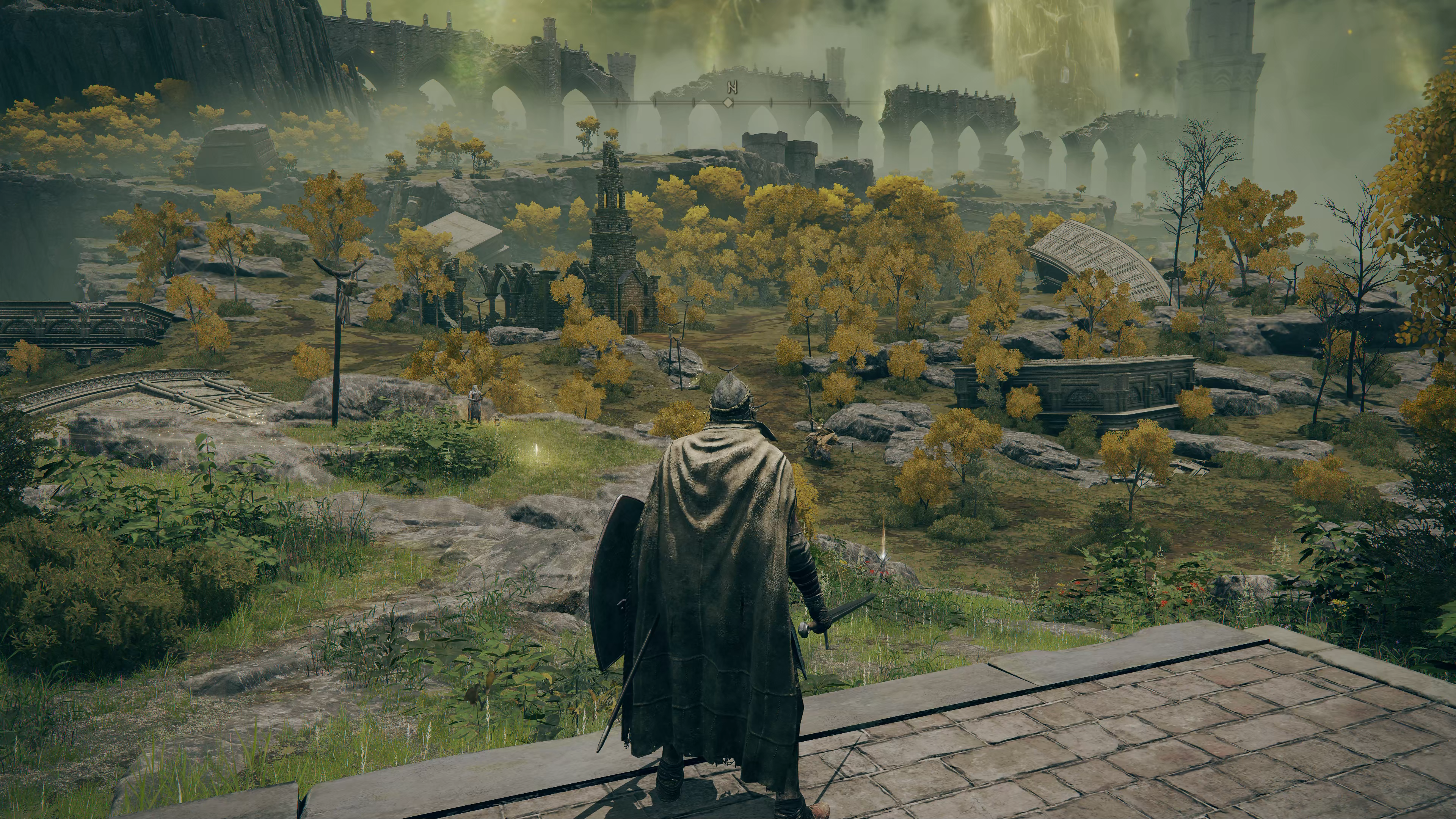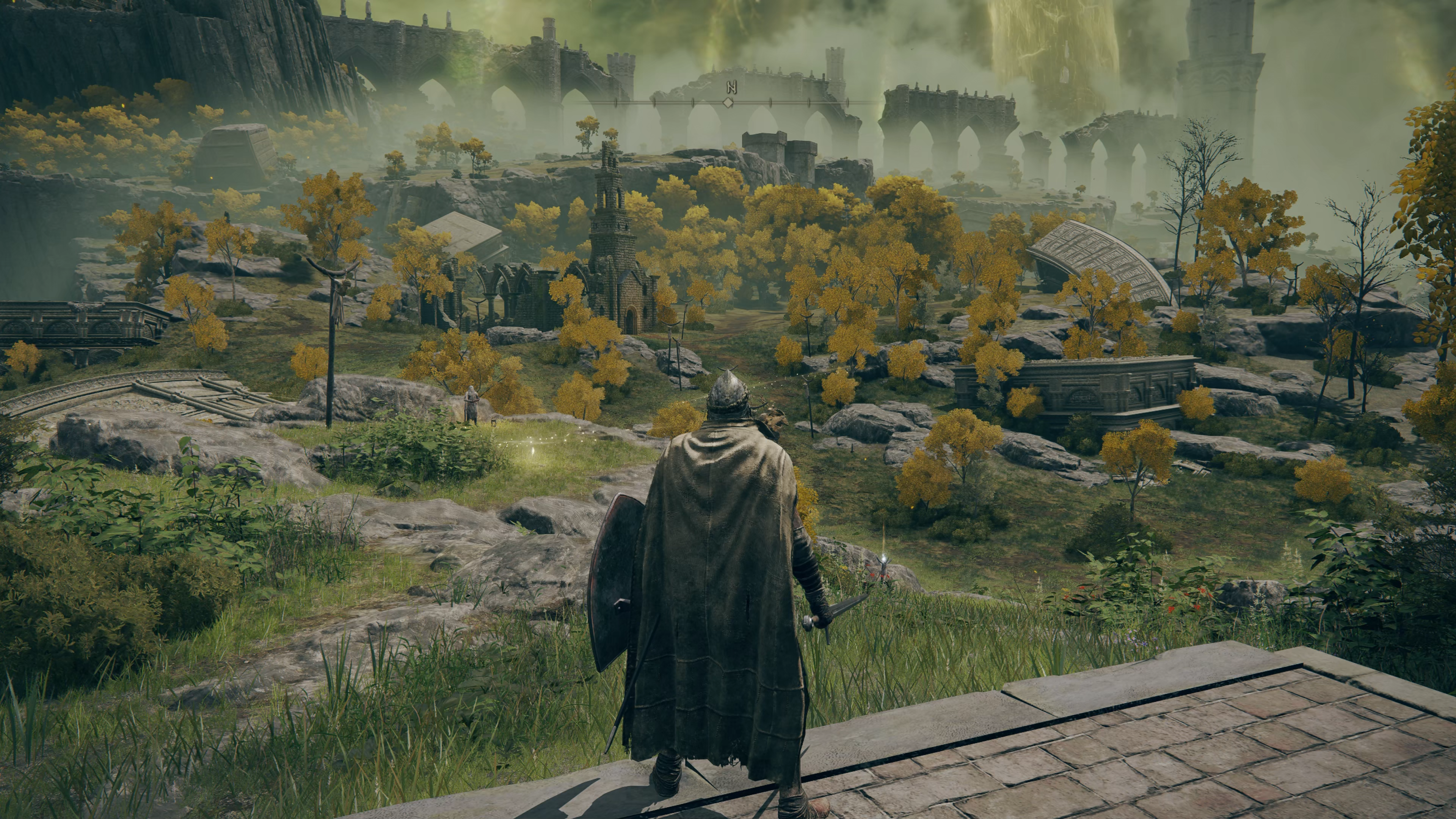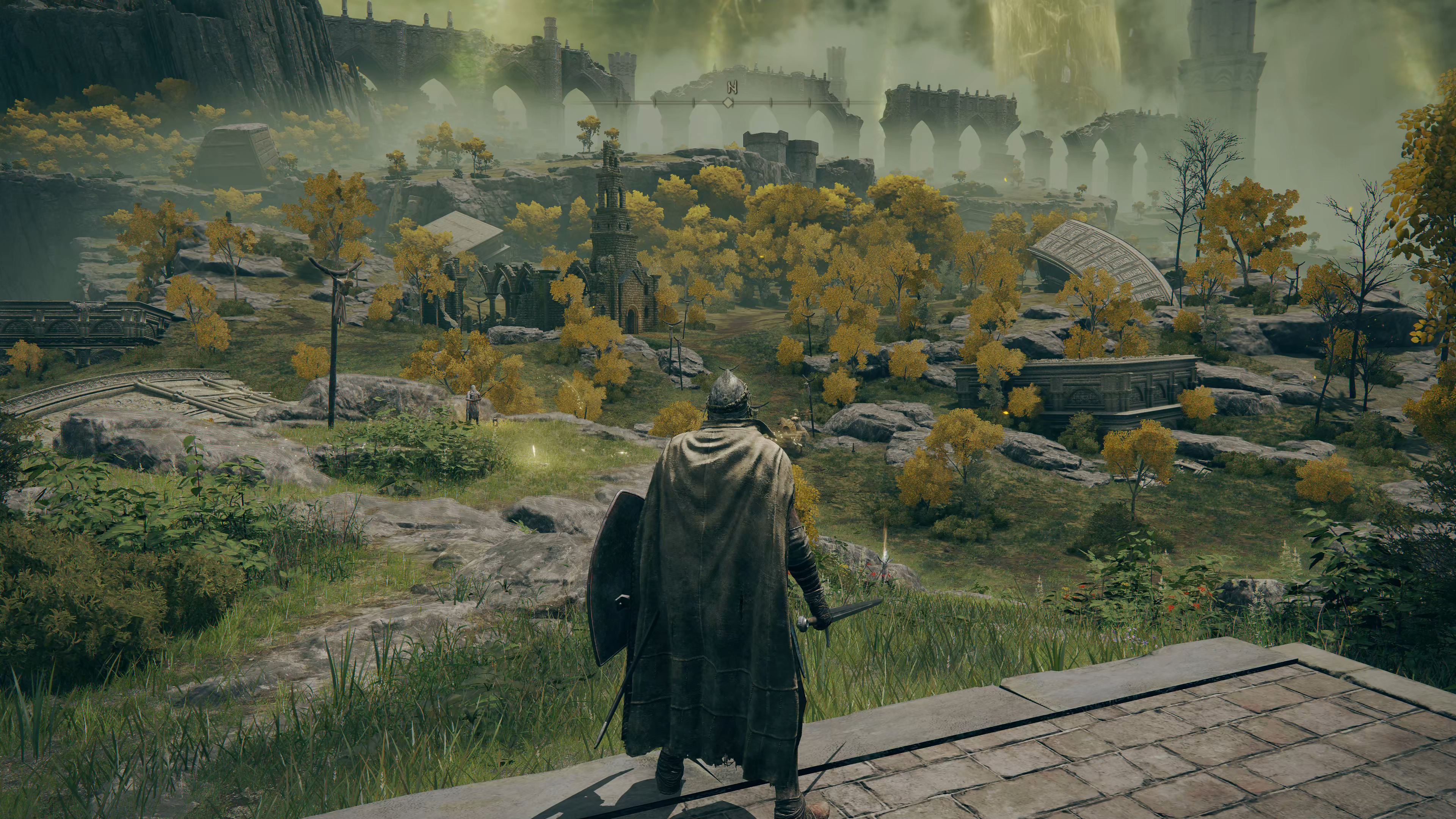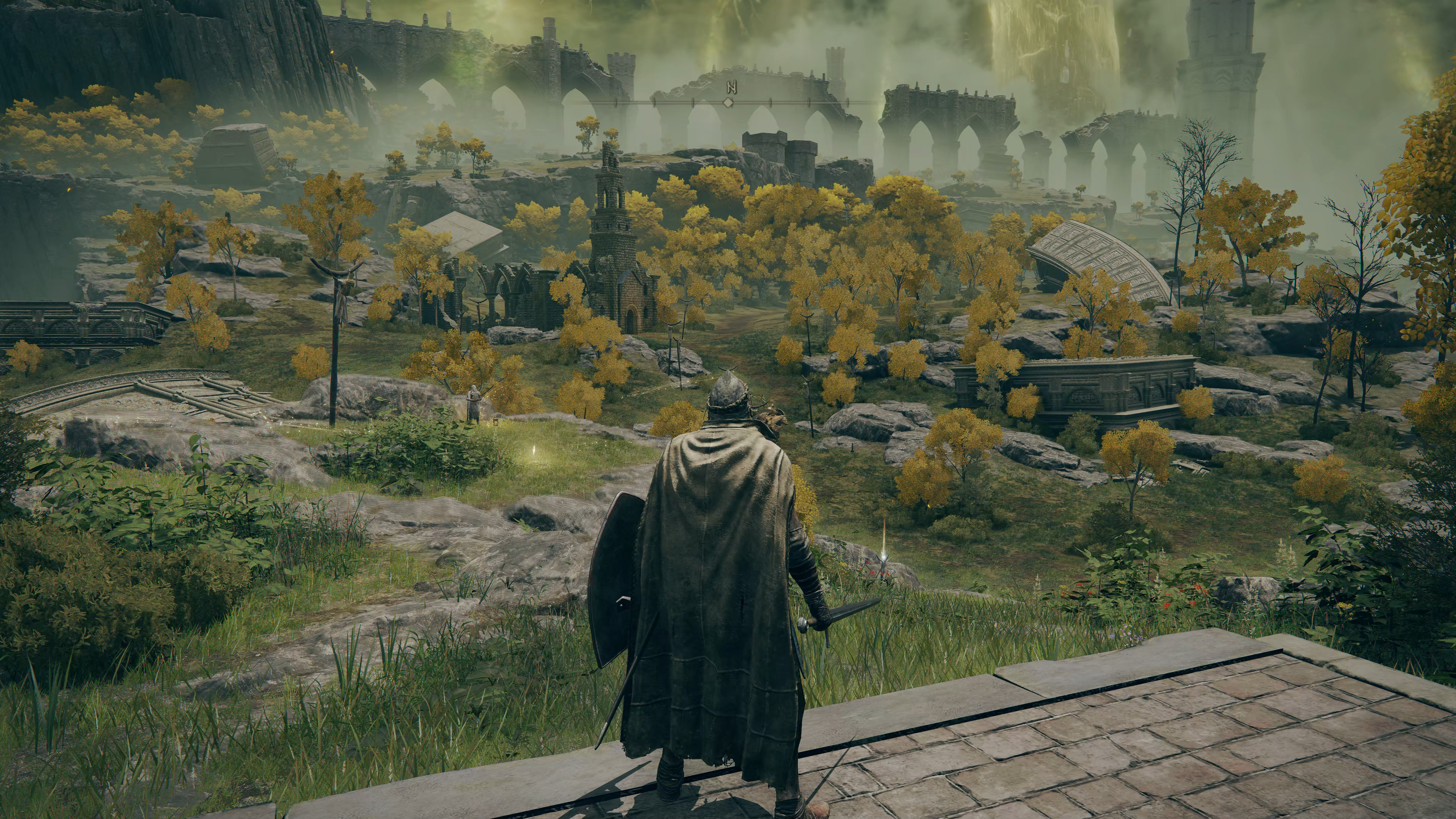Quite how the game reached consumers in this state isn’t clear, but the ‘why’ does have some level of explanation. Elden Ring is the first title that sees the From Software engine transition to DirectX 12. As we’ve discussed previously (most recently with the disappointing PC port of Final Fantasy 7 Remake), DX12 gives developers much more control of the GPU: elements such as memory management and threading are no longer handled by the driver, meaning that many responsibilities move across directly to the developer. The stuttering issues suggest that shader compilation management is poorly handled, with shader code compiled the first time it’s needed in-game, generating split-second delays throughout the experience. It’s pervasive. There’s a noticeable stutter when you first move your character. There’s another when you first thrust your sword. Every time a new particle effect is generated, the game stutters again. For every new enemy type you encounter, there’s another large stutter. It looks to me like every single time a new shader effect is invoked that you may not have seen before, the game tries to compile it ‘just in time’ as the game is rendering. Therein lies the issue: in my testing, every ‘first’ within Elden Ring produces pauses of up to a quarter of a second. The more you play, the fewer ‘firsts’ you encounter, so game fluidity inevitably improves. Replaying content you’ve already experienced will also have present less stutter as the shader compilation was cached the first time you played. However, this all resets to default every time the game is updated, reinstalled or if the user updates their graphics driver - in which case, the stuttering issues return with the same severity as before. We’ve seen a couple of reports of tuned PCs using Intel Alder Lake CPUs being able to run the compilation so fast that the game still runs at 60fps, but even if confirmed, this means that only the tiniest proportion of PCs in the world are capable of running the title at a consistent 60fps. At this point it’s worth stressing that consoles do not have the shader compilation issue: they are fixed platforms, so games ship with the shaders pre-compiled. In addition to this issue, there’s further stutter, seemingly tied into background loading. Walking up a staircase in the game’s intro or traversing some fields, I noticed more hitching in both cases. Elsewhere, wandering the open world causes single frame drops - and there’s no real consistency to it. Sometimes a few frames will drop within a few metres, while at other times you can travel hundreds of in-game metres without a problem. Finally, there’s stutter on camera transitions in cutscenes - and this one’s curious because it only happens on PC, not consoles. All of this combines to produce an off-putting experience that high specs cannot overcome - I was testing on a top-end rig with a Core i9 10900K and an RTX 3090. Even running the game at 720p with the lowest settings didn’t give me a smooth experience. It gets worse the less capable your PC is, particularly on the CPU side. On more mainstream hardware, I noticed that in addition to stutter, there’s slow-down to contend with, adding to the game’s woes. We’ve also played the game on Steam Deck, where the stuttering effect causes even more prolonged slow-down - and that’s a shame as outside of its sticking points, you can easily run this game locked to 30fps - on a handheld! Everything I’ve discussed so far are areas where From Software needs to take remedial action to get the game into an acceptable state - but there’s still more that needs to be done. First of all, v-sync is the default and there’s no way to turn it off in-game - you’ll need to resort to your GPU control panel to do that, whereupon you discover that the game artificially caps itself to 60fps anyway. This is a big issue: since the launch of Dark Souls, the PC audience has been begging From Software to embrace arbitrary frame-rates. This is brought up vocally with every single new release from the firm, yet once again, we’re reliant on mods to allow the game to run at higher frame-rates. Ultrawide support is also missing, making it two for two in terms of basic PC upgrades From Software should have provided on day one. So, what about scalability beyond the quality threshold set by the PlayStation 5 and Xbox Series X versions of the game? Well, there are some upgrades, but this leads me on to another issue: the barebones nature of the settings screen, which offers up no explanation or image preview of what each of the configurables actually does. As it is, PC users can tap into an enhanced effects preset that delivers slightly further light rendering, plus the ability to access console effects limited to the quality mode and run them at notionally higher performance levels on PC. I’ve put together a table below showing where to pitch PC settings to match each of PS5’s modes but there are still some unknowns: similar to my analysis of Sekiro, I’ve literally no idea what the shader quality option actually does, it seems to have no visible impact on image quality or performance. In terms of settings recommendations for 1440p display owners, if you have a GPU of GTX 1080 power or higher, consider using maximum settings - there are barely any differences between high and max visually, excluding shadow quality. If you have a GTX 1070 or an older-gen AMD GPU like an RX 580 or lower, look into using the medium settings, but with the high quality shadows (medium looks poor) and high quality anti-aliasing. Comparing performance with these presets to the fully maxed experience, I saw a 22 percent increase in performance - albeit with an obvious visual quality loss in shadows and the complete lack of tall grass. Recommended settings: Maximum across the board. Acceptable compromises for less capable GPUs: medium settings with high anti-aliasing and high shadows. What of the classic GTX 1060 or RX 580 paired up with a 1080p display? Even factoring out the stutter issues, neither of these GPUs can sustain 60fps on these compromised settings, though the Nvidia card seems to command a five percent performance advantage over its AMD counterpart. Dropping to 900p should get you to 60fps or you can stick to 1080p and lean into the advantages offered by a G-Sync or FreeSync display - but while these screens can definitely help in properly GPU-bound situations, their effectiveness in smoothing out the profound stuttering problems is limited. Ultimately, I’m sure that Elden Ring deserves its immensely positive reception as a game and in that respect, its status as a Eurogamer Essential is not in question. However, I can’t help but think that it’s time for From Software to devote a little more time to improving technical polish - to provide the complete package and to avoid situations like this. The performance scenario on the consoles isn’t perfect, but there are ways and means for PS5 and Series X owners to get a very good experience - you can bypass the frame-rate drops on PS5 via using the PS4 Pro version, trading bling for extra performance (not that the user should be put into this position). Meanwhile, Xbox Series X owners can combine the performance mode with a VRR display to get a good-looking, smooth game. But as far as I can see, there are no easy solutions to fixing Elden Ring performance on PC, certainly not on the user side - it’s down to the developer to step in and address the core problems.
